
Urban Forest Tour MAP -森林浴ができる場所-
- CHECK

Why not join one of licensed guides for a leisurely walk in a fabulous Japanese park and garden?
あなたが好きな公園や庭園で、森林浴を体験してみませんか。
Urban Forest Tour MAP
森林浴ができる場所
Tokyo
-
-
Koishikawa Botanical Garden
Koishikawa Botanical Garden, which is affiliated with Tokyo University, is open to the public.The garden used to be the Koishikawa Goyakuen, created in the Edo period. The 40-acre site is home to many ancient Japanese plants, relics, and plants that serve as valuable research materials. It is the birthplace of modern botany and serves as a center for botanical research in East Asia. Besides seasonal forests such as plum, cherry, camellia, azalea, and maple, there are also greenhouses and a medicinal garden. It will be fun to visit with a guide who is knowledgeable about forests!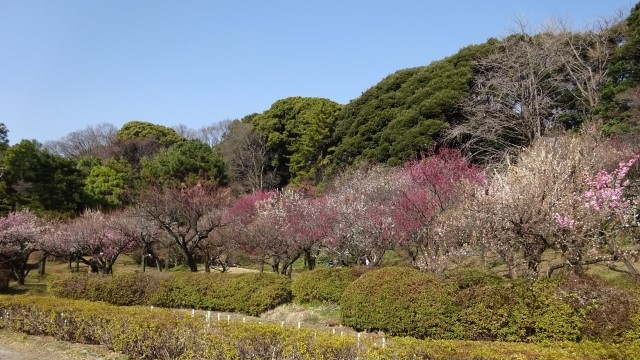
-
-
-
Kansen-en Park
Kansen-en Park, located near Mengebashi and Waseda stations on the Toden Arakawa Line, is a Japanese garden built on the grounds of a daimyo’s mansion. The name “Kansen-en” is derived from the on-site spring water, which is known for its suitability for the tea ceremony. The 3.5-acre garden, surrounded by trees around a pond, transports us to a world of tranquility away from the hustle and bustle of the metropolis. The garden features seasonal highlights, including azaleas and hydrangeas in early summer, vibrant fall foliage, and trees with “yukizuri” art in winter.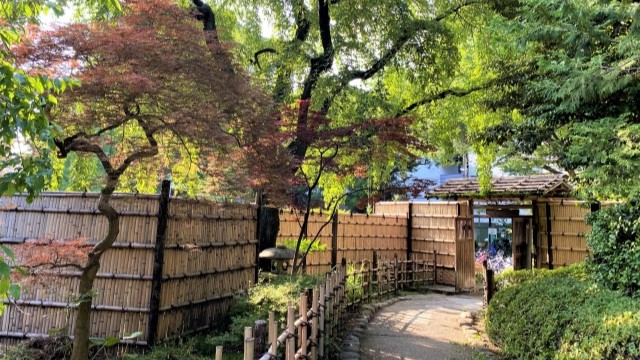
-
-
-
Kiyosumi Garden
Kiyosumi Garden, located a 3-minute walk from Kiyosumi-Shirakawa Station, is a special historical site in Tokyo. The 9-acre garden has a large pond called “Sensui” with three small islands (Nakajima), an artificial mountain modeled after Mt. Fuji, famous stones from various places, and the Taisho Memorial Museum. Besides due to its proximity to the sea and rivers, there are various species of wild birds such as bulbuls, turtle doves, long-tailed tits, starlings, great tits, and spotted ducks. Take a walk and rest in a pavilion or on a bench. Around the garden you can also enjoy retro sights and modern cafes!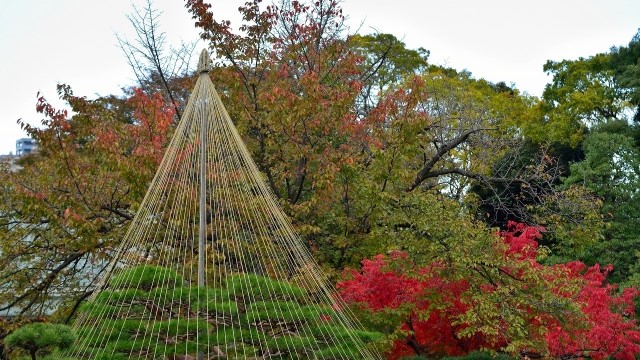
-
-
-
Kyu-Furukawa Gardens
Kyu Furukawa Gardens is a metropolitan park known for its beautiful rose garden and autumn leaves. The gardens are treasured for their preservation of early 20th century style, with a Western-style building and garden designed by the architect Josiah Conder, as well as a Japanese garden created by a famous Kyoto garden architect. The Western-style building was handed down to future generations as the “Otani Art Museum” by Yonetaro Otani, who is known for managing the Hotel New Otani, and you can tour the hall, study, reception room, and dining room on the first floor. In spring and autumn, you can also enjoy matcha in the tea room in the garden.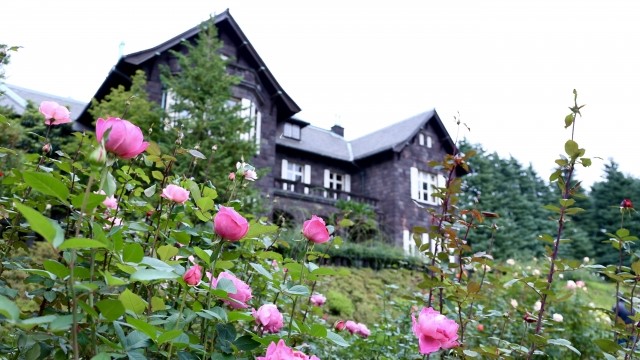
-
-
-
Atago Shrine
Atago Shrine is located in Minato Ward and is famous for its stairway to success. It is within walking distance from Kamiyacho, Onarimon, and Toranomon. Why not take a stroll on the shrine grounds, surrounded by sacred trees, while praying for good business fortune? If you are fit, why not climb the steep 86 steps from the Otorii gate to the main shrine?In the Edo period, there was a brave man who climbed up there on horseback at the order of Shogun Iemitsu. At that time they could see the Boso Peninsula!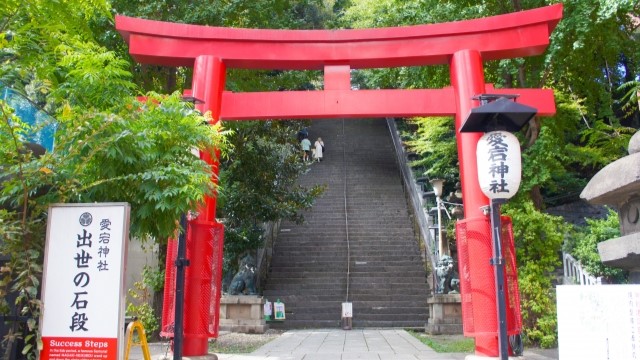
-
-
-
Kyu-Shiba Rikyu Garden
Kyu-Shiba Rikyu Garden, located a mere one-minute walk from Hamamatsucho Station, is one of the few remaining gardens in Tokyo that belonged to feudal lords from the Edo period, along with Hamarikyu Garden and Koishikawa Korakuen. In its center features a pond, and the garden is constructed using many famous stones. It is a precious place where you can enjoy the seasonal, colorful wonders of cherry blossoms, azaleas, wisteria, and autumn leaves, allowing you to escape the hustle and bustle of Tokyo and connect with nature. If you have time, you can also visit nearby Hamarikyu to enjoy the beauty of two gardens and views of Tokyo Bay.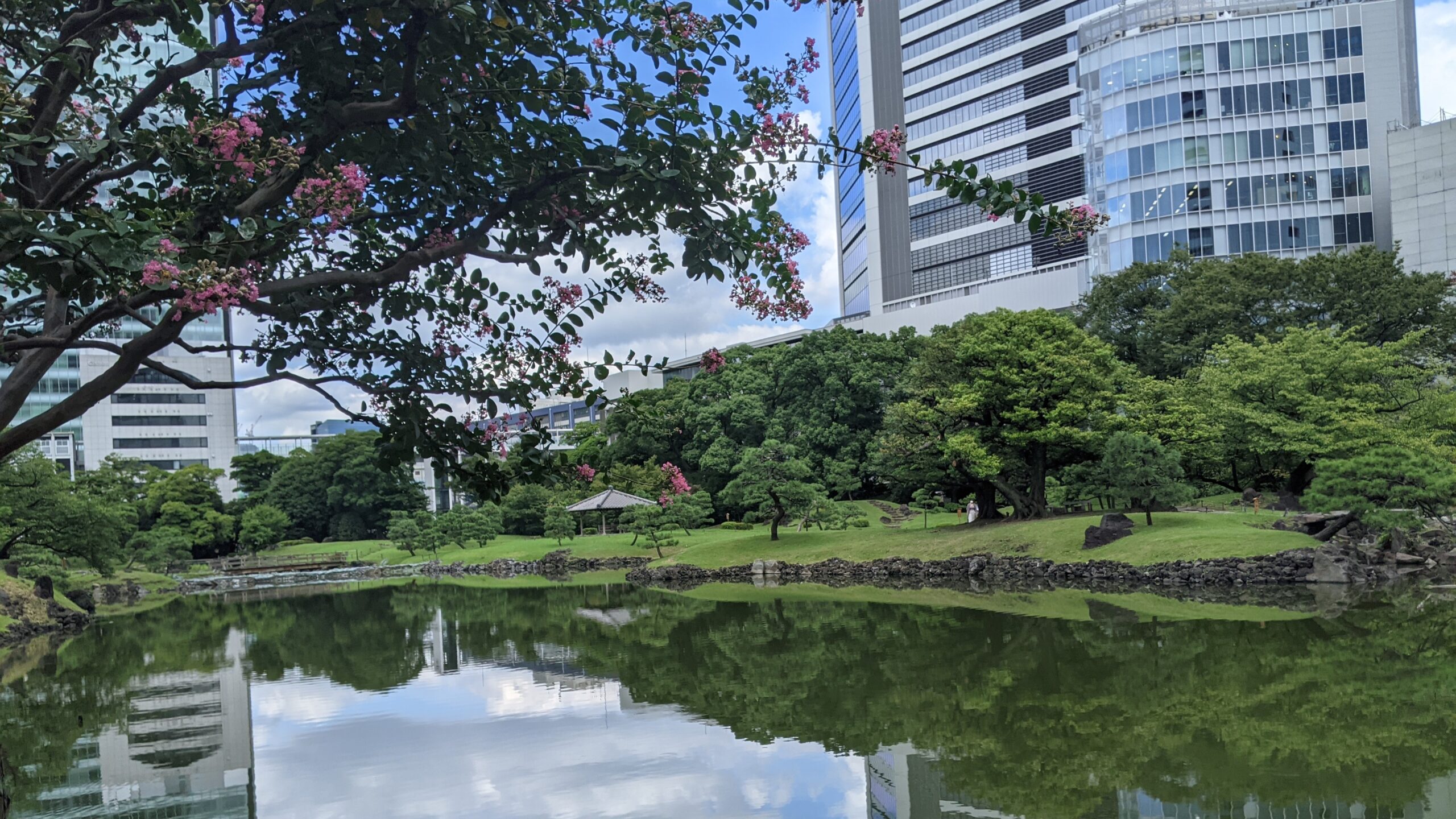
-
-
-
Koishigawa Korakuen
Koishikawa Korakuen is part of Tokyo’s three great gardens, along with Rikugien and Hamarikyu Gardens. The site spans an area of 17 acres (70,000 square meters) and is the oldest existing daimyo garden. The serene garden is centered around a pond that paints a lovely picture each season with its plum blossoms, cherry buds, irises, and colorful leaves. Moreover, the garden fuses harmoniously with the landscapes of lakes, mountains, and rivers modeled after Lake Saiko in China, Arashiyama in Kyoto, and Kiso River in Nagano. In Japanese garden dialect, it is called ”Borrowed scenery (Shakkei)”. Yet, you will be tickled pink to see the modern white Tokyo Dome from this garden!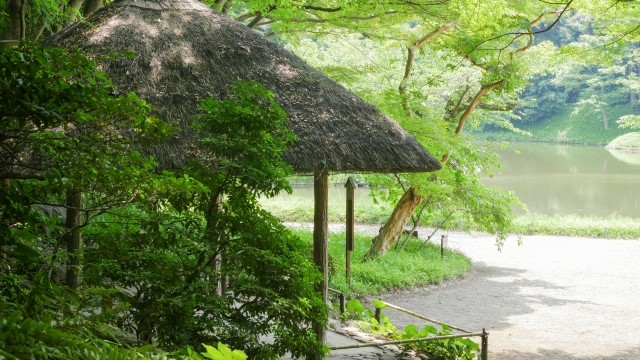
-
-
-
Shiba Park
Shiba Park was established as the first park in Japan during the Meiji period. At present, the park is managed by the Tokyo Metropolitan Government and Minato-ku. Camphor, zelkova, and ginkgo are some of the stately trees that grace the park. You can have a picnic on the grass while looking at the amazing Tokyo Tower. You can also sit on a bench and listen to the cascading sounds of the waterfall in Maple Valley. Nearby are the Shiba Toshogu Shrine, the Zojoji Temple, the Tokyo Prince Hotel, the Maruyama Tumulus, and the Old Tokaido Pine Trees, so we suggest you take a walk while you are sightseeing. You cannot help but be moved by the thought that you are walking under the same pine trees as the people of the Edo period.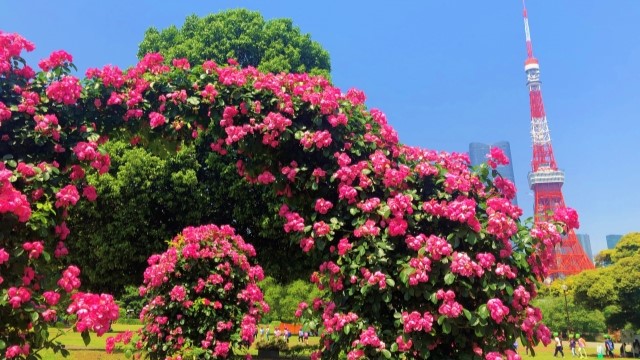
-
-
-
Ueno Park
Ueno Park, Japan’s first park, is celebrating its 150th anniversary. All of its 133 acres include art galleries, museums, and a zoo. The plateau is known as “Ueno no Yama” and has many evergreen broad-leaved trees. Around Shinobazuno Pond, visitors can stroll around the pond or take a boat ride. The cherry blossoms of Ueno Park have been attracting visitors since the Edo period. Much to the delight of its visitors, 1,200 cherry trees are in full bloom every spring. But there are also seasonal delights to be enjoyed at any time of the year. There are hydrangeas in June, lotuses in Shinobazuno Pond in August, yellow leaves on ginkgo trees in October, and autumn leaves on maples in November.
-
-
-
Shinjuku Gyoen National Garden
With a sprawling land of 14 acres and 10,000 trees, Shinjuku Gyoen National Garden never fails to impress and amaze its visitors. There is no doubt that you are going to enjoy your half day trip there as you stroll through the Japanese garden whose roots go back to the Edo period, admire its European-style garden built in the Meiji period. Spring is the best time for viewing famous spots of cherry blossoms and roses in Tokyo. Then in autumn, the fallen leaves of plane trees and maples put on a spectacular show. At ”Mother and Child Woods,” you can enjoy hanging around the flowers and insects. And take a little break to have lunch or a coffee at the park restaurant!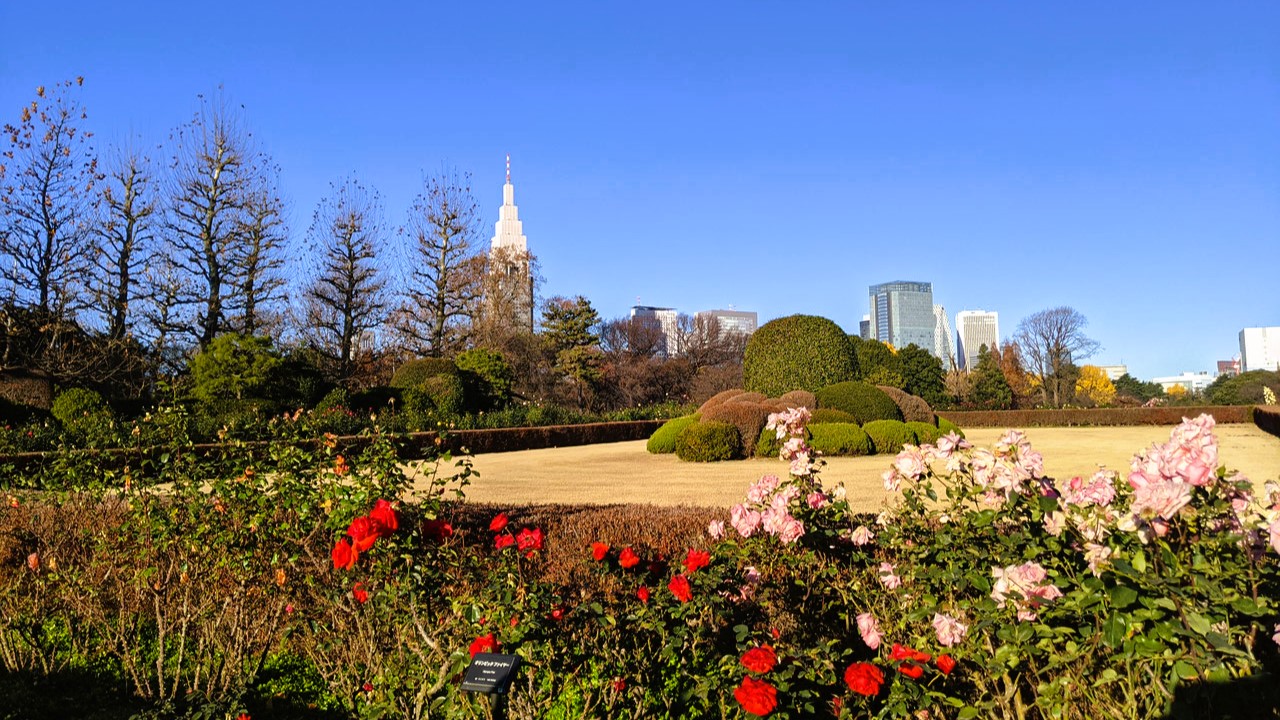
-
-
-
Yoyogi Park
Yoyogi Park is a 133-acre park that spans Shinjuku and Shibuya. Across the street, there are two areas: a wooded area and an athletic field. It was a peaceful landscape of rice fields during the Edo period and the place where the first airplanes flew over. The area was also designated as the Athletes’ Village for the 1964 Tokyo Olympic Games. The forest park area includes groves of trees, five plazas, a bicycle path, flower gardens, and a bird-watching area. There are few tall buildings around the park. So you can enjoy relaxing under the big sky, just like Central Park in NY.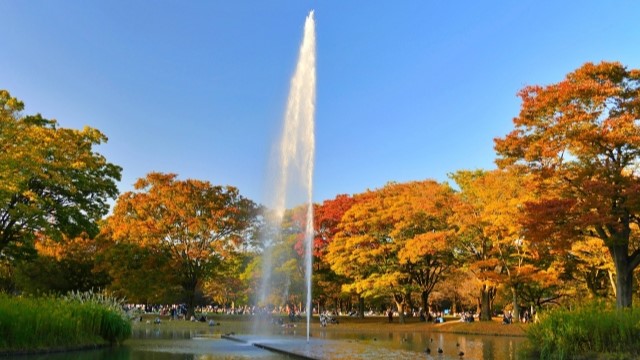
-
-
-
Meiji Shrine
Meiji Shrine is one of Japan’s most representative shrines. The various trees that are over 100 years old allow you to experience the richness of nature all around you. The path that leads up to the main shrine is so quiet that you will hear the twittering of birds and the sound of gravel under your feet as you breathe in the sacred air all around you.If you are after tranquillity and peace of mind, then visiting early in the morning is the best time. Also, along the way, there are cafés and souvenir shops that open at 8:30 or 9:00. After visiting the main shrine, why not also visit Meiji Jingu Gyoen or the square in front of the Meiji Jingu Treasure Hall? If you are not in a rush, one great idea is to take a leisurely walk in the forest or have a picnic on the lawn while taking in the changing scenery.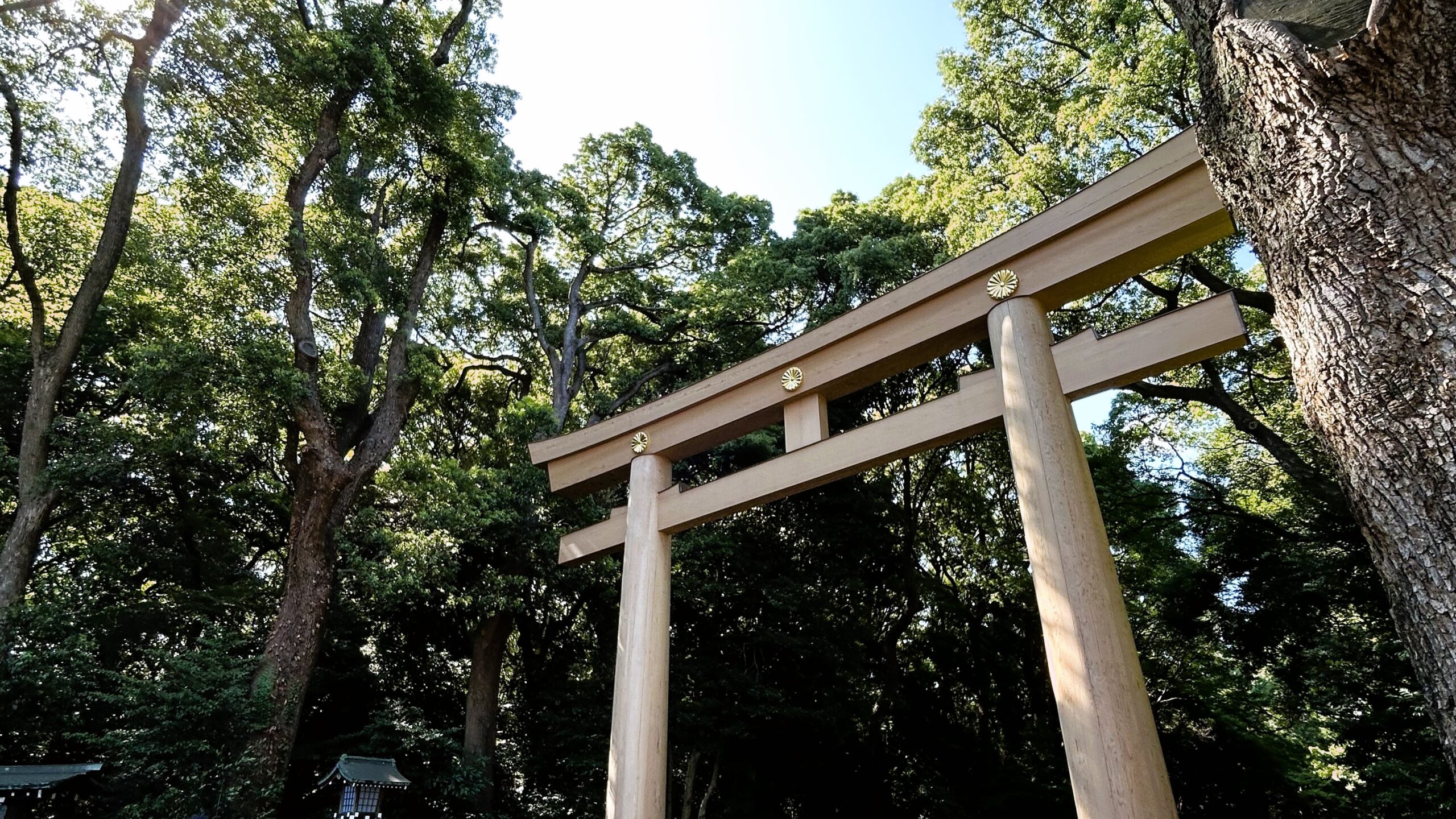
-
-
-
Rikugien
Rikugien, a delicate and gentle Japanese garden, was created in the early 1600s on land reserved for the shogun. Along with Koishikawa Korakuen Garden, it was one of the two largest gardens in Edo during the Edo period (1603-1867). Trees, mountains (Tsukiyama), and ponds make up this impressive garden. And this garden was also a special place for the famous industrialist Yataro Iwasaki (founder of the Mitsubishi group) in the 19th century. A nice, relaxing walk through the garden takes about two hours. You can also sip your powdered green tea at a teahouse in the garden while admiring the pond from the window.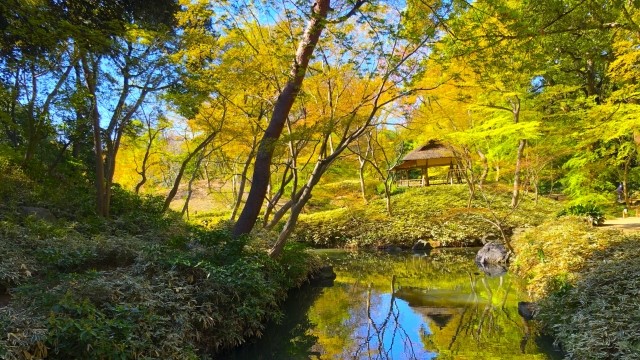
-
-
-
Hibiya Park
In front of the Imperial Hotel lies Hibiya Park, which was born as Japan’s first Western-style park built on the site of the Edo-era daimyo garden. Now a 40-acre metropolitan park, it is a place of relaxation for Tokyo residents and tourists alike.The park is full of greenery, and adorned with ginkgo trees and camphor trees that are over 100 years old. A walk around Kumogata Pond gives you a taste of the seasons, with its cherry blossoms and tulips in spring, and pansies and autumn leaves in fall and so on. After your walk, why not taste the quality cuisine at the long-established restaurants in the forest?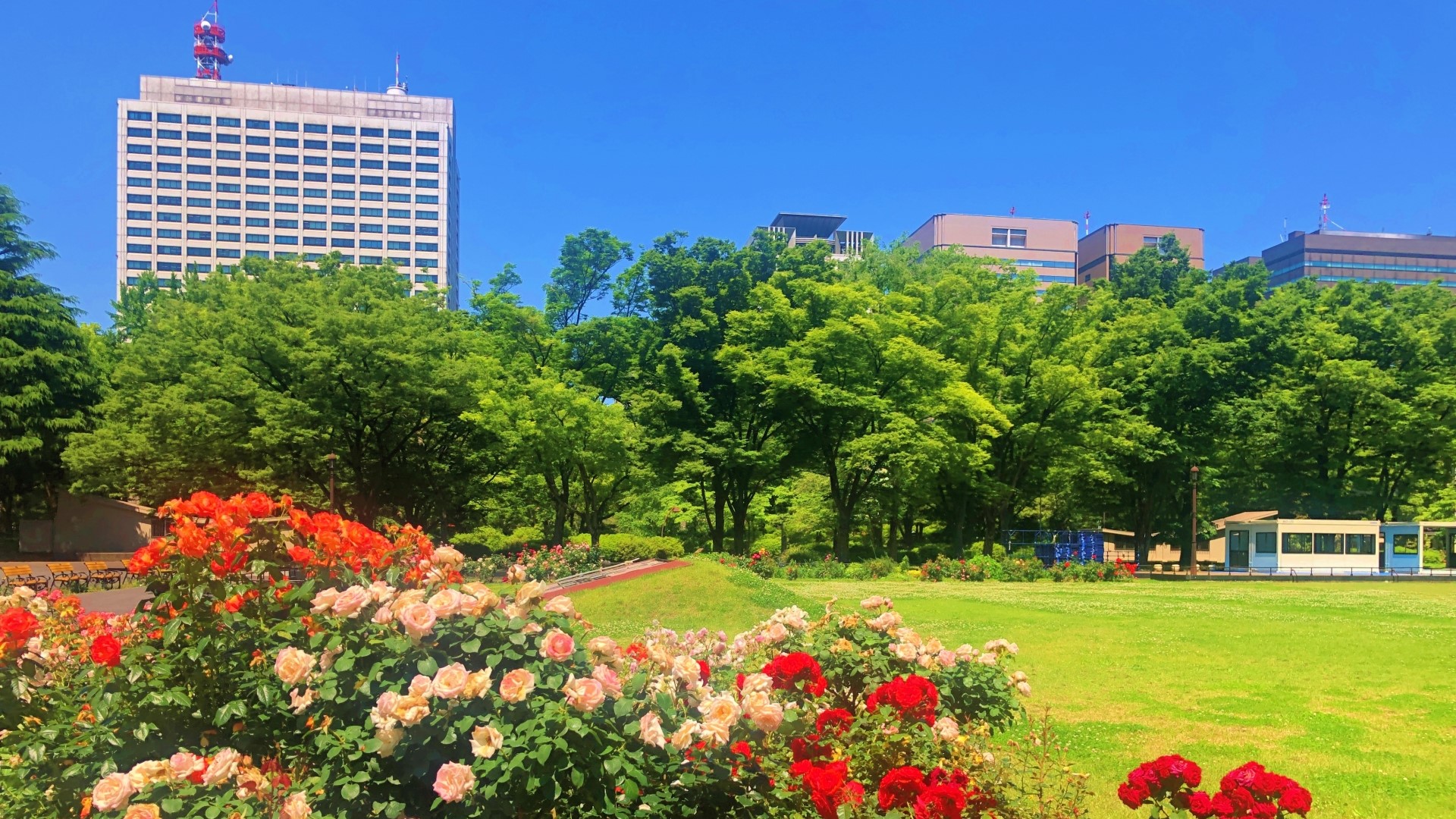
-
-
-
The Institute for Nature Study
The Institute for Nature Study (attached to the National Museum of Nature and Science), which is designed as a national nature and historic site, boasts an area of 49 acres. Its precious natural forest is home to giant Japanese chinquapin trees, Edo-period pines, and broad-leaved Quercus trees. The forest is also home to peregrine falcons and cuckoos! Moreover, killifish, loaches and a variety of Japanese aquatic plants grow in the eight ponds and marshes. As you walk along the forest path, taking in the fresh air while listening to the rustling sound of the leaves and chirping of birds, your soul is bound to find healing.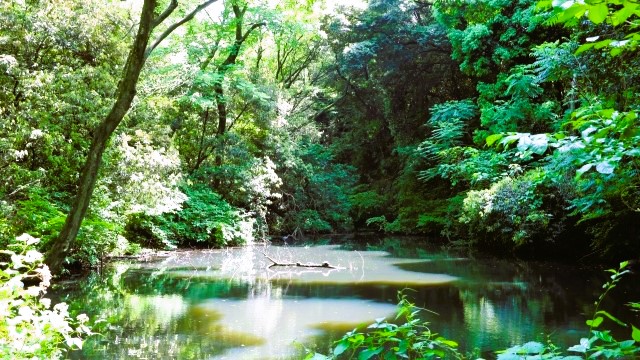
-
-
-
Arisugawa-no-Miya Memorial Park
Right in the heart of Tokyo lies Arisugawa-no-miya (imperial prince arisugawanomiya) Memorial Park, an urban land which boasts an area of approximately 6.7 hectares. As you walk through the park, you cannot miss the Japanese garden and a pond that is home to carp, gobies, and turtles. While taking a leisurely walk along the forest road, you will be able to admire the seasonal flowers, hear the twitter of wild birds, and come across autumn dragonflies. Why take a little break to have a healthy Japanese lunch known as obento? Within this park, there is Tokyo Metropolitan Central Library, book lovers will have a marvelous time.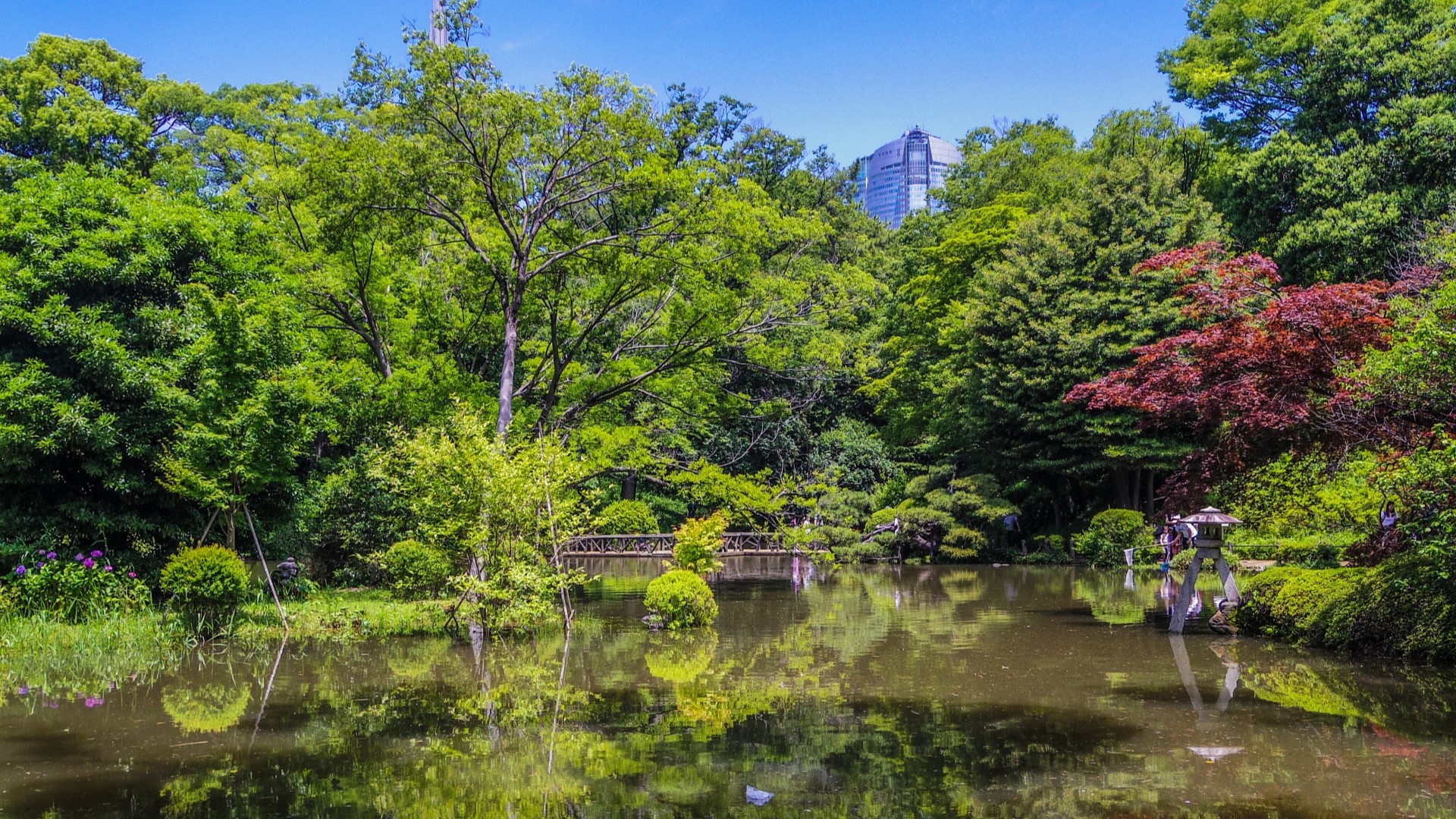
-
-
-
Hamarikyu Gardens
Hamarikyu Gardens is a feudal lord garden that goes back to the Edo period(early 18th century). Although it is located in the heart of the city, you can feast your eyes on its lovely sights that combine history with nature. In the far distance, the imposing skyscrapers stretched out beyond the pond and forest look cool and mysterious. You can take a leisurely stroll passing by famous trees, duck farms, and traditional buildings, while taking in the seasonal ambience all around you. How about tasting the matcha and Japanese sweets in the tearoom facing the pond? This pond is also connected to Tokyo Bay where seawater flows into it and saltwater fish make their home.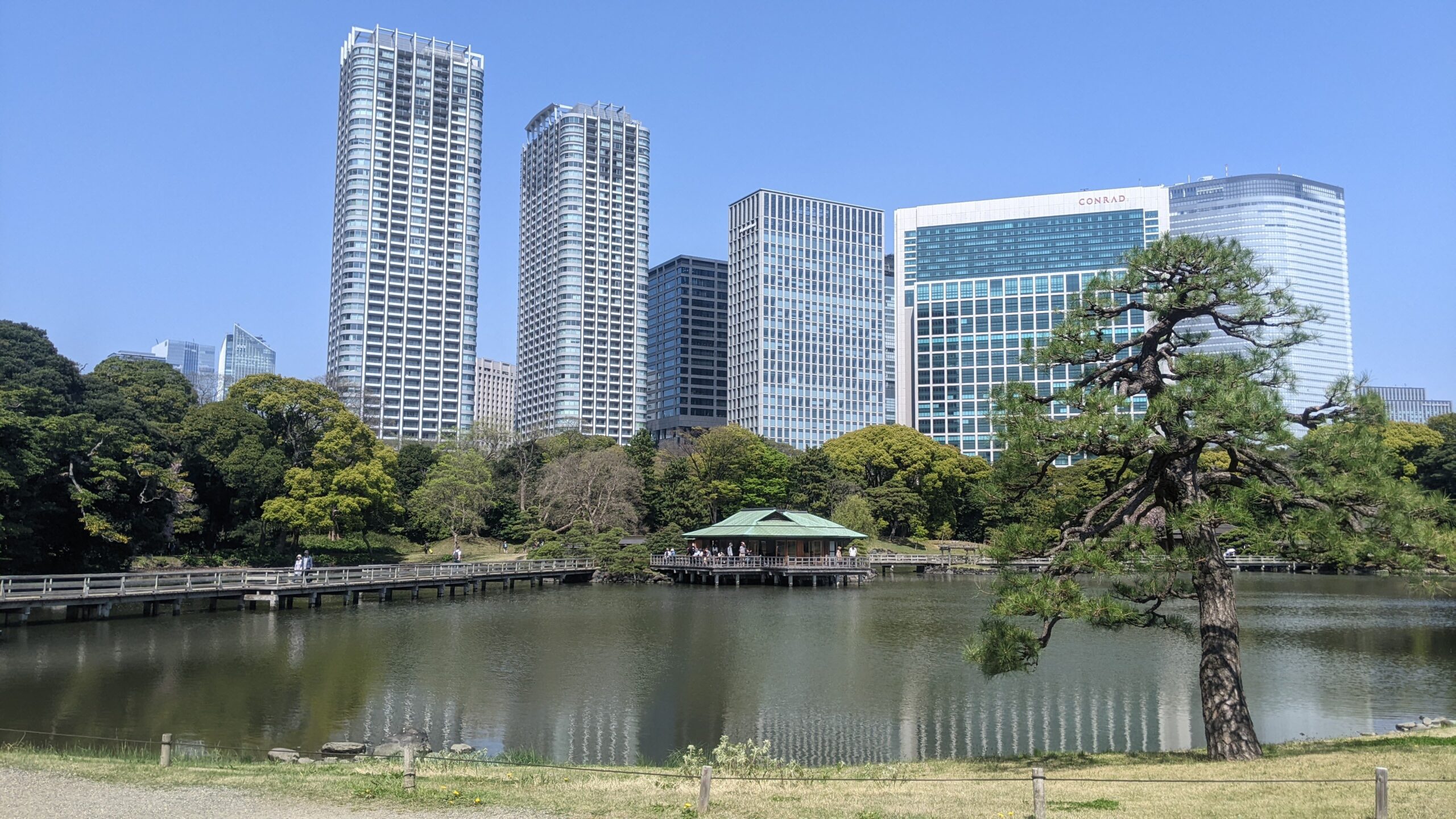
-
-
-
Kitanomaru Park
Kitanomaru Park is located in the heart of Tokyo and is adjacent to the East Gardens of the Imperial Palace. You can enjoy the wonderful experience of beautiful cherry blossoms in the spring and splendid maple leaves in the fall. Also, you can admire the camphor and zelkova tree, the vast lawn, and a tranquil pond, spend quiet time away from the hustle and bustle of the city. It’s easily accessible, being within a 15-minute walk from Kudanshita, Jimbocho, and Takebashi. The Museum of Modern Art and the National Archives of Japan are located on Uchibori Street, leading toward Takebashi Station.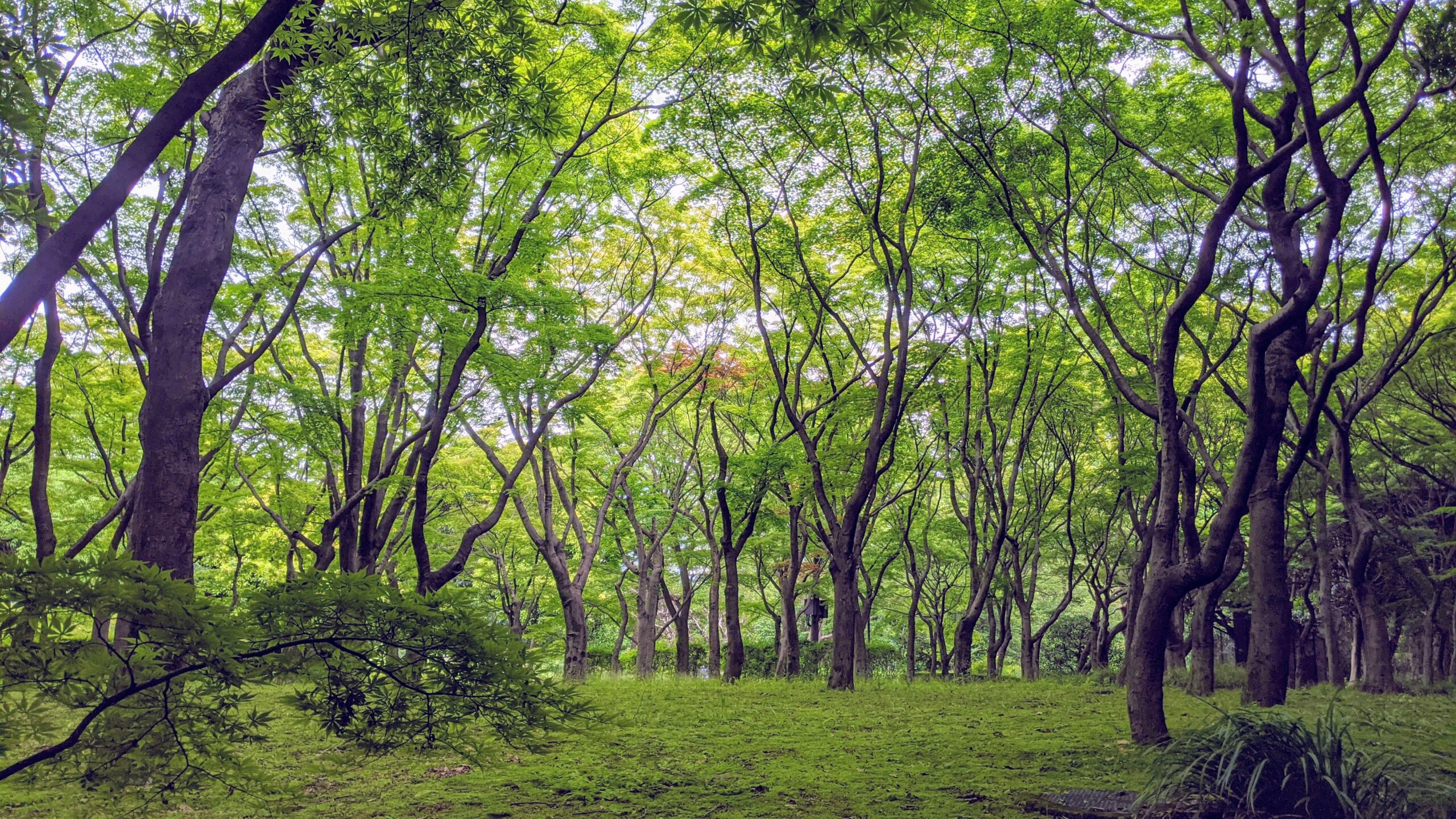
-
東京都
-
-
【文京区】小石川植物園
小石川植物園は、植物学研究のための東京大学附属施設ですが、一般に開放されています。 江戸時代の小石川御薬園が前身で、武蔵野の面影を残す約16万m²の敷地に、日本古来の植物や遺構、貴重な植物があります。日本の近代植物学発祥の地であり、現在も、世界の植物研究センターの役割を担っています。梅林、桜林、椿園、ツツジ園、モミジ林など四季折々の林のほか、温室や薬園もあります。森林や植物に詳しいガイドと訪れるのがおすすめです。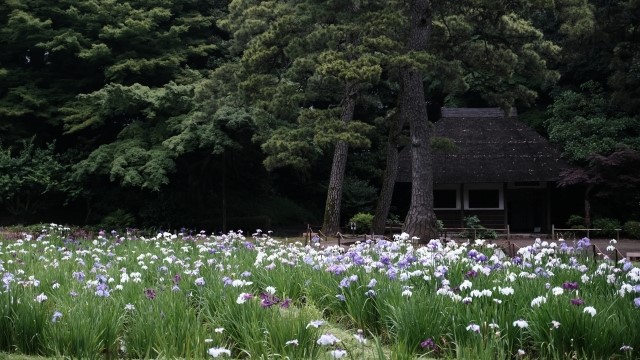
-
-
-
【新宿区】甘泉園公園
都電荒川線面影橋駅、早稲田駅に近い甘泉園公園は、大名屋敷跡につくられた日本庭園です。閑静な住宅街にあり、知る人ぞ知る名園です。「甘泉園」の名は、ここから湧く泉の水が、茶道に適していたことに由来しています。約1万4000㎡の庭園は、中央の池を囲むように樹木が茂り、初夏のツツジ、アジサイ、秋の紅葉、冬の雪吊りなど、四季折々に見どころがあります。池にそって小路を散策していると、都会の喧騒とは別世界の静けさを感じられます。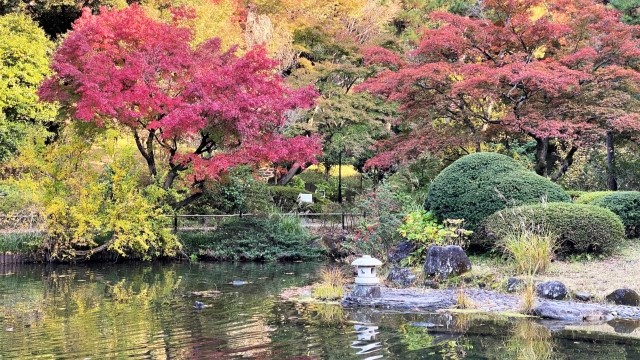
-
-
-
【江東区】清澄庭園
清澄白河駅から徒歩3分の清澄庭園は、東京都の名勝に指定されています。約37,000㎡の庭園に、三つの中島を配した大きな池「泉水」、富士山を模した築山、各地の名石、涼亭、大正記念館などの見所があります。海や川が近いため、ヒヨドリ、キジバト、オナガ、ムクドリ、シジュウカラ、カルガモなど、様々な野鳥もいます。散策の途中に東屋やベンチで休息できます。また、清澄白河の駅周辺は、レトロな下町とモダンなカフェが共存する観光名所です。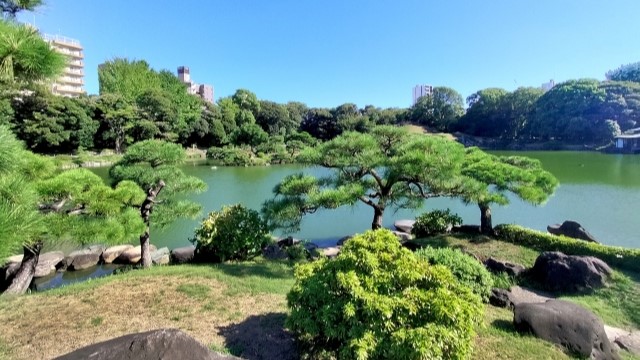
-
-
-
【北区】旧古河庭園
旧古河庭園は美しいバラ園と紅葉で知られる都立庭園です。 洋館、洋風庭園、日本庭園があり、20世紀初頭の庭園様式を残す貴重な庭園です。 洋館と庭園はイギリス人のジョサイア・コンドル博士によって設計されました。洋館は、ホテル・ニューオータニの経営で知られる大谷米太郎が「大谷美術館」として後世に伝えており、1階のホールや書斎、応接室、食堂を見学できます。春と秋は、庭園内の茶室で抹茶をいただくこともできます。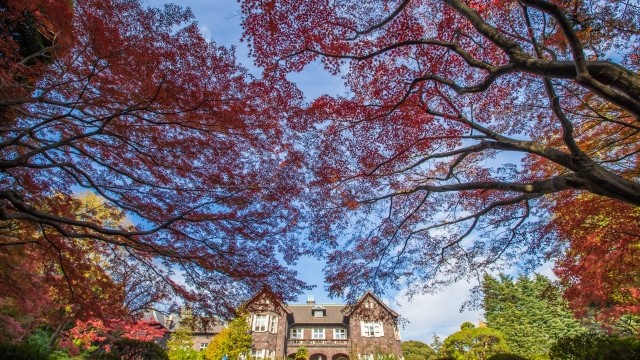
-
-
-
【港区】愛宕神社
愛宕神社は港区の高台にあり、神谷町、御成門、虎ノ門から徒歩圏内です。出世の階段で有名なので、もしあなたが健脚なら、虎ノ門ヒルズ駅の近くにある大鳥居から山頂の本殿まで、86段の階段を登ってみませんか? ご神木に囲まれた境内や参道を、自身や大切な人の健勝や活躍を祈願しながら散策すると、すがすがしい気分になれるでしょう。江戸時代、将軍の命により、馬に乗ってこの階段を登った勇者がいたとのこと。当時、境内から東京湾や房総半島が一望できたようです。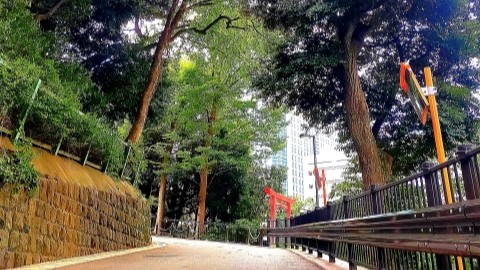
-
-
-
【港区】旧芝離宮恩賜庭園
浜松町駅から徒歩1分の場所にある旧芝離宮恩賜庭園は、浜離宮恩賜庭園、小石川後楽園などとともに、今東京に残る江戸時代の大名庭園のひとつです。庭園の中心に池があり、数々の名石を用いた庭造りが行われています。桜やツツジ、藤、紅葉など季節の彩りも楽しめて、都内の喧騒を忘れて、自然と向き合える貴重な場所です。時間に余裕があるなら、浜離宮と芝離宮をセットで巡ると、それぞれの庭園から眺める景色が異なり、庭園の美しさと東京湾岸の風景を堪能できます。
-
-
-
【文京区】小石川後楽園
小石川後楽園は、六義園、浜離宮恩賜庭園と並ぶ東京三名園の一つです。 面積は約7万平方メートルあり、現存する江戸時代の大名庭園としては最古のものです。池を中心とした回遊式の庭園は、早春の梅、春の桜、初夏の菖蒲、秋の紅葉と、あらゆる季節に美しい雰囲気を楽しむことができます。 中国の西湖、京都の嵐山、長野の木曽川などを借景したエリアがあり、それぞれに湖、山、川、田園の風景が巧みに描かれています。江戸の風趣な景色の先に、東京ドームの屋根が見えるのもユニークです。
-
-
-
【港区】芝公園
芝公園は、明治時代に、上野公園などとともに、日本で最初の公園として指定されました。クスノキ、ケヤキ、イチョウなどの大木がたくさんあり、芝生で東京タワーを見上げながらピクニックをしたり、もみじ谷で滝の音をききながらベンチで休息することができます。近くに丸山古墳や、芝東照宮、増上寺、旧東海道松並木があり、観光しながらの森林浴がおすすめ。この松並木の下を、江戸時代の人々が歩き、飛脚が駆け抜けていたと思うと、感慨深いものがあります。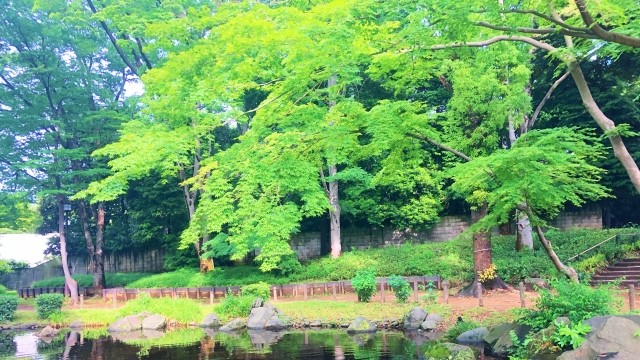
-
-
-
【台東区】上野恩賜公園
上野恩賜公園は開園150年を迎えた、日本最初の公園です。54万㎡の園内に、美術館、博物館、動物園があり、上野の山と呼ばれる台地には、樹齢の長い常緑広葉樹が生い茂ってます。不忍池のエリアでは、池のまわりの散策やボートを楽しめます。この公園は江戸時代から「桜の名所」として知られ、毎年春になると1200本の桜が咲き誇ります。5、6月にはあじさい、7、8月には不忍池の蓮、9,10月にはいちょうの黄葉、そして11,12月にはもみじやけやきの紅葉と、いつ訪れても季節の楽しみを感じられます。また園内にある「上野動物園」も樹木の宝庫。動物たちが住む檻の上に、秋には鮮やかな紅葉が広がります。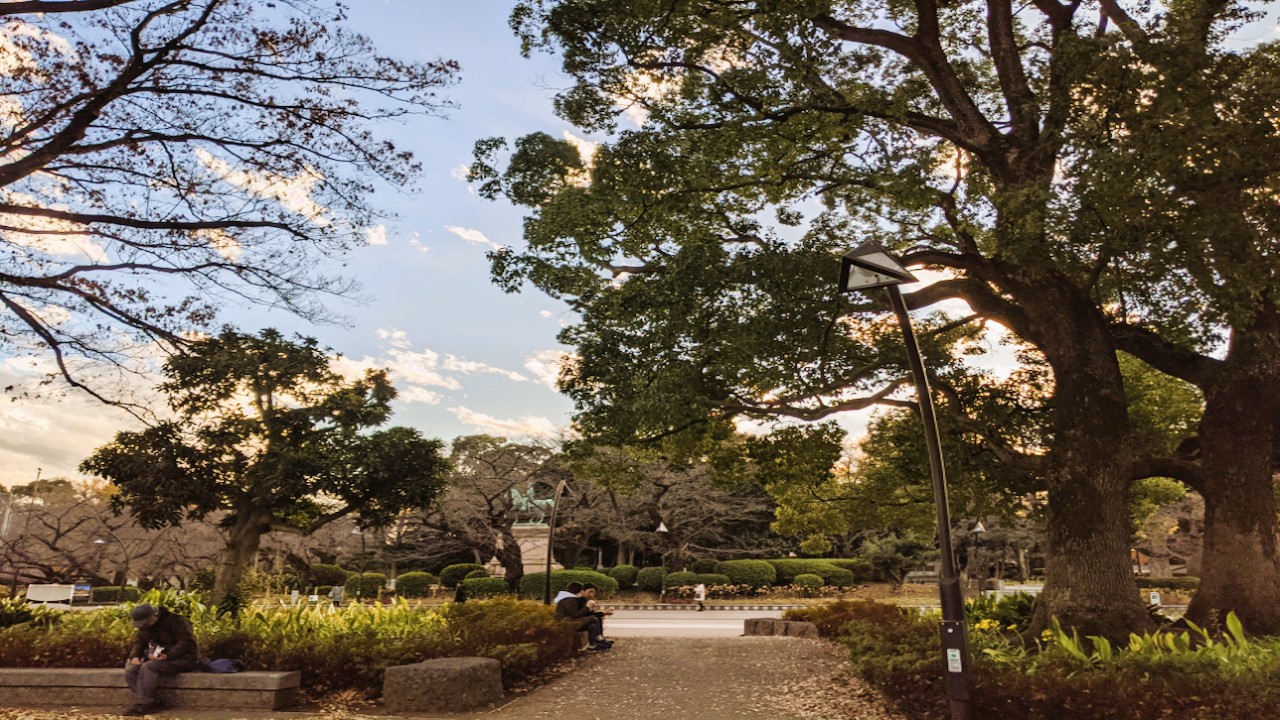
-
-
-
【新宿区】新宿御苑
新宿御苑は約57,000㎡の広さがあり、10,000本以上の樹木が植えられています。園内には、江戸時代の日本庭園や、明治時代に造られたヨーロッパ式庭園、バラ園、プラタナスの並木などがあり、半日~1日ゆっくり散策を楽しめます。春は東京屈指の桜の名所。秋はプラタナスやモミジの紅葉が見事です。「母と子の森」では、小川のそばで草花や昆虫とふれあいを。園内には和風カフェやレストランがあり、飲食、テイクアウトも可能です。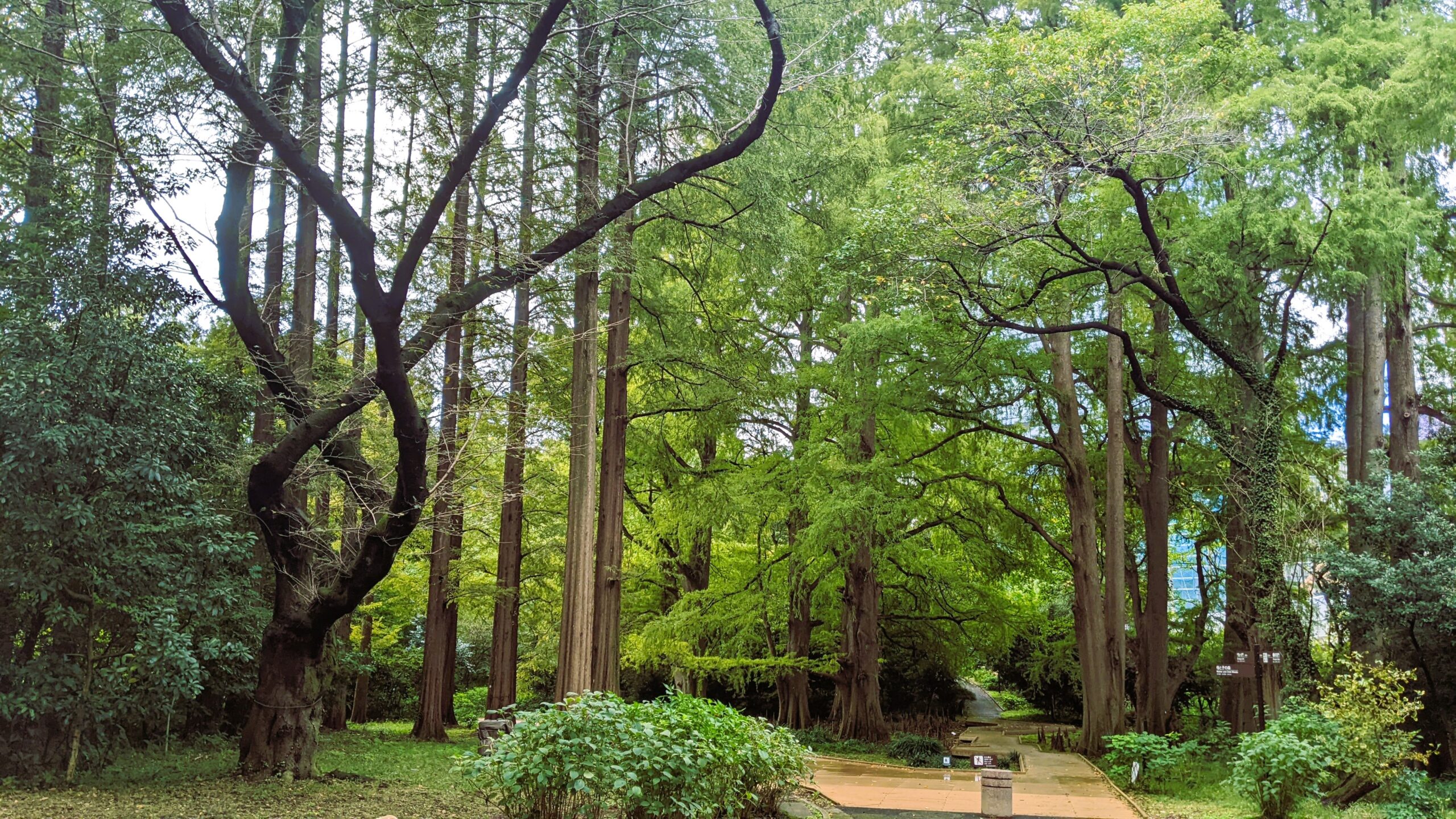
-
-
-
【渋谷区】代々木公園
代々木公園は、新宿区と渋谷区にまたがる540,000㎡の公園です。この場所は江戸時代、地方の大名の屋敷があり、田畑が広がっていました。明治時代には、ここから日本の飛行機が飛び、1964年の東京オリンピック時は選手村となりました。現在、森林公園のエリアには、雑木林と5つの広場、サイクリングロード、バードウォッチングゾーンなどがあります。周囲に高い建物があまりなく、開放感ある景色を楽しめます。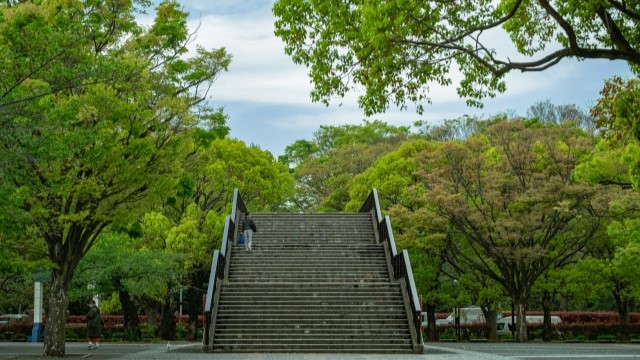
-
-
-
【渋谷区】明治神宮
明治神宮の境内や周辺の杜には、樹齢100年を超える木々が多く茂っています。原宿駅そばの第一鳥居は、2022年に100年ぶりに建て替えられました。本殿に続く参道は、鳥のさえずりや風の音が聞こえるほど静かで、歩くたびに玉砂利の音が足元に響きます。江戸時代の庭園に由来する明治神宮御苑の散策や、明治神宮宝物殿前広場(芝生)での休憩もおすすめ。参道沿いには、レストランやカフェ、おみやげや、ミュージアムがあります。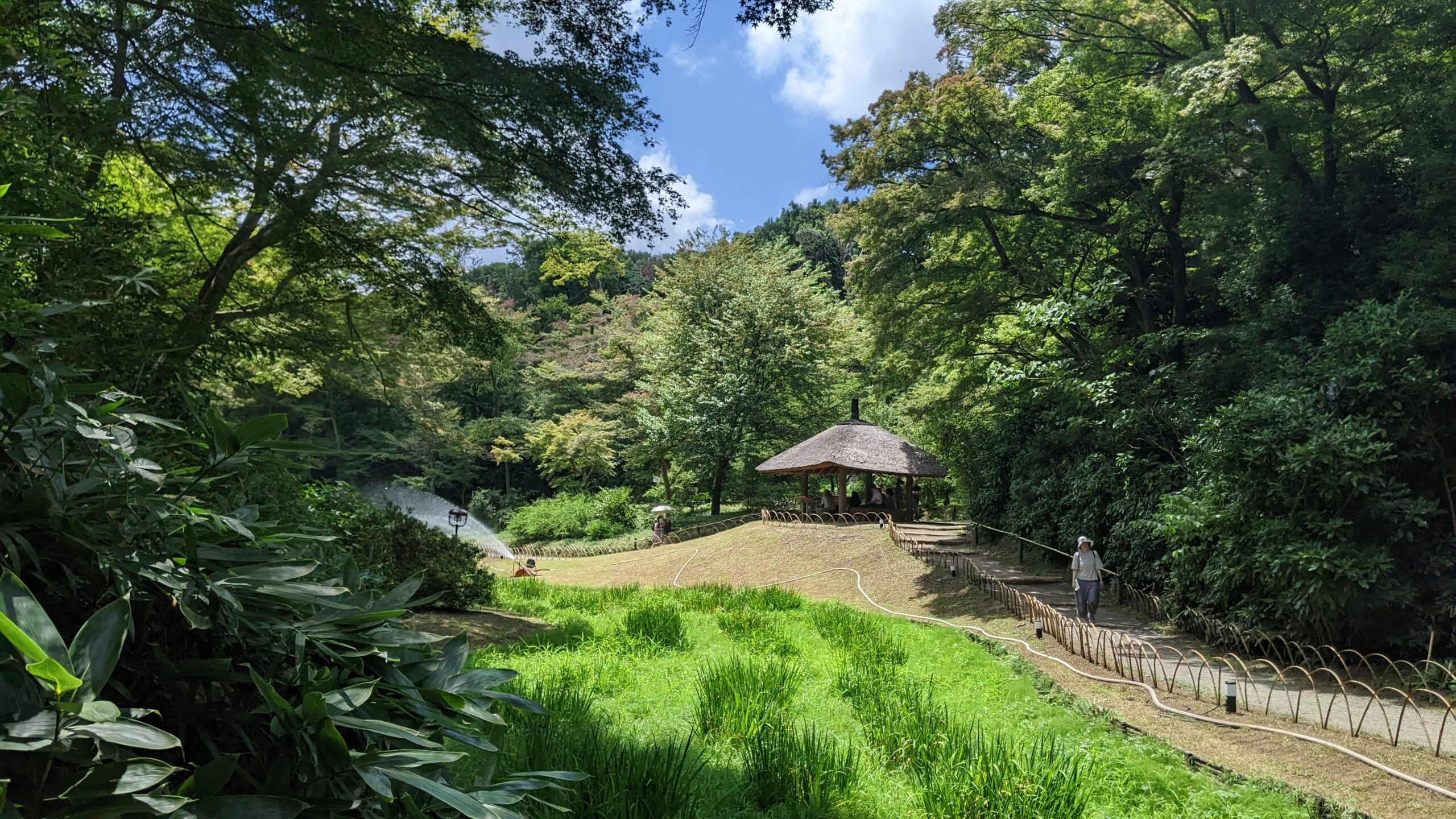
-
-
-
【文京区】六義園
六義園は小石川後楽園とともに、江戸時代を代表する大名庭園です。広さは約87,000㎡あり、シダレザクラ、イロハカエデ、ドウダンツツジ、イチョウなど約560本の樹木が、築山や池のまわりに配されています。池に沿って園路があり、春と秋の夜間はライトアップの演出で幻想的に彩られます。特に紅葉シーズンは、水香江、つつじ茶屋、山陰橋の風景がおすすめです。見晴らしの良い藤代峠(築山)から見渡す庭園の全景も見事です。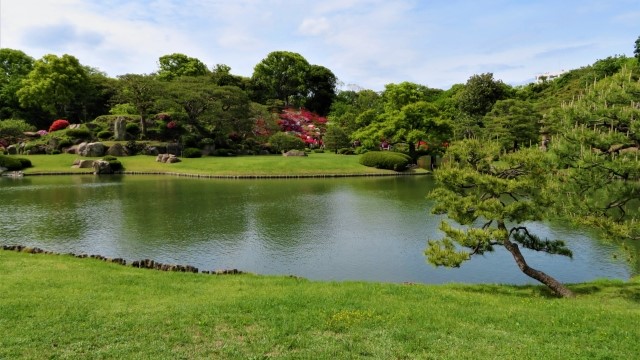
-
-
-
【千代田区】日比谷公園
日比谷公園は、江戸時代の大名屋敷の跡地にできた日本初の西洋風公園です。現在は約16万㎡の都立公園として、都民や観光客の憩いの場になっています。園内には、幹周りが7m もあるイチョウや、樹齢100年を超えるクスノキなどがあります。雲形池や花壇では、春は桜やチューリップ、秋はパンジーや紅葉など、四季の風景を楽しめます。散策のあとは、森の中にある老舗レストランで、上質な西洋料理を楽しんではいかがでしょうか。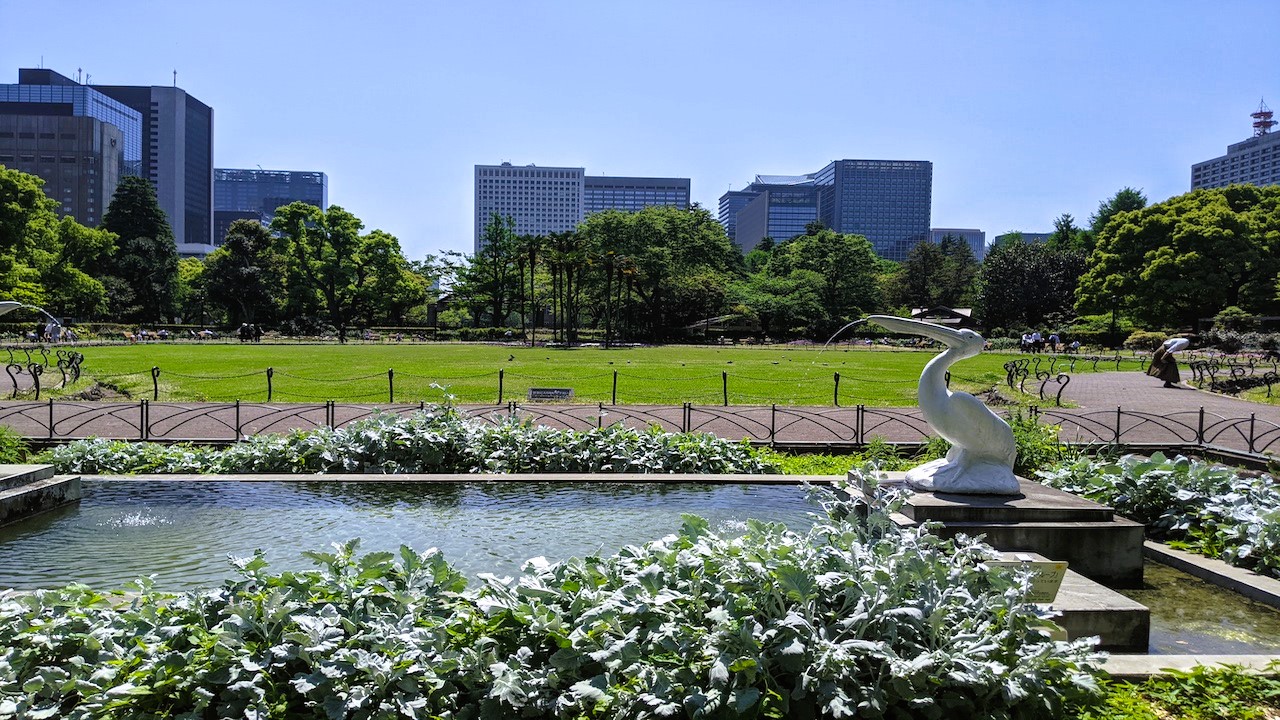
-
-
-
【港区】国立科学博物館附属自然教育園
国立科学博物館附属自然教育園は、 20万㎡の敷地を誇る、国の天然記念物・史跡です。関東平野南部の自然が残る貴重な森で、シイの巨木や江戸時代の松、広葉樹の林があります。ハヤブサやカッコウ、ホトトギスも住んでいます(偶然出会うのは難しい!)。8つの池や沼地にはメダカやドジョウ、多彩な水生植物が生息しています。森の小径を歩き、新鮮な空気を吸い込み、木の葉の音や鳥のさえずりに耳を傾けると、心が癒されること間違いなしです。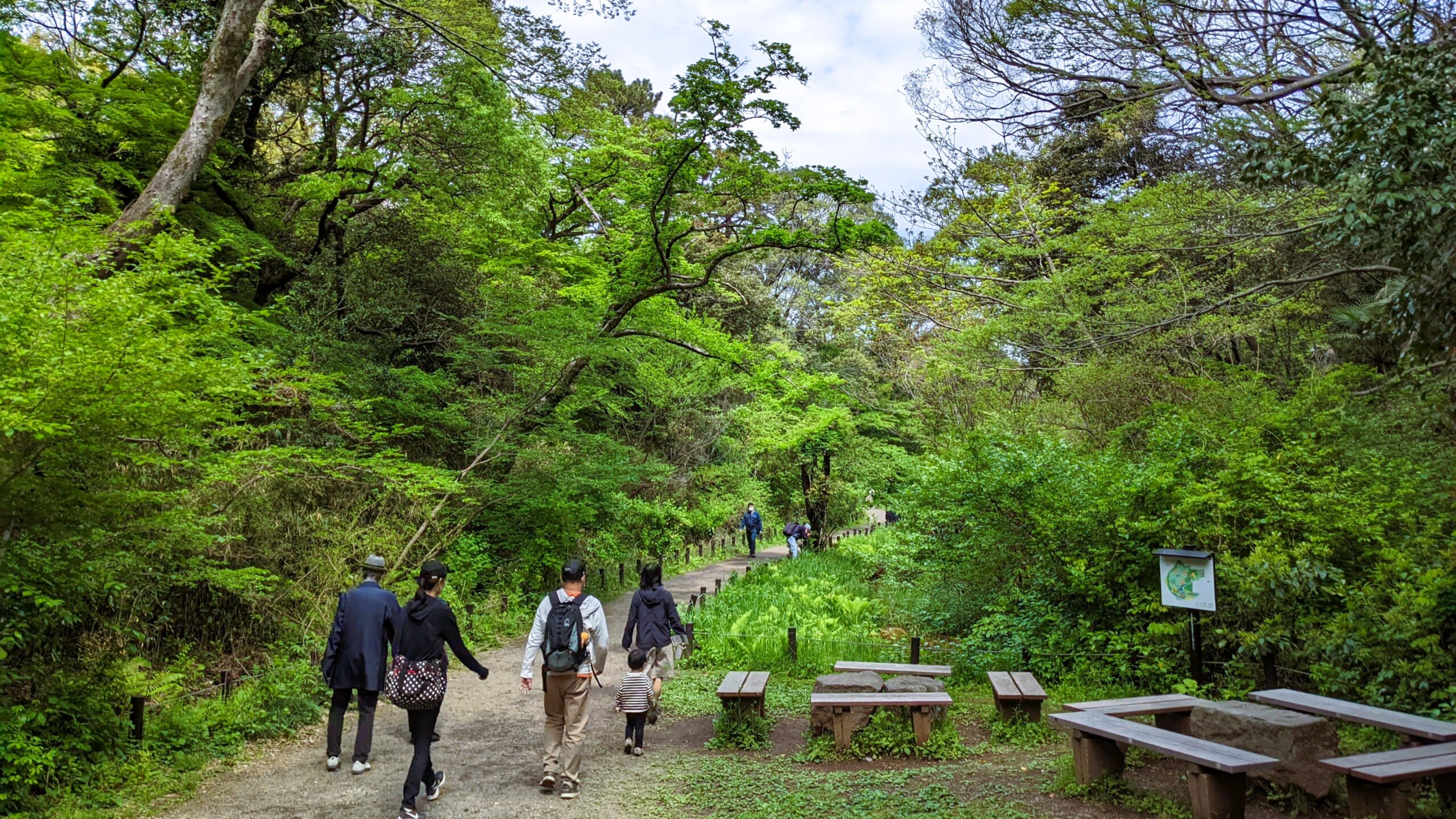
-
-
-
【港区】有栖川宮記念公園
有栖川宮記念公園は、東京メトロ日比谷線の広尾駅から徒歩3分、都心の港区麻布にありながら、67,000㎡の敷地を誇る都市公園です。公園内には日本庭園があり、噴水のある池にはコイやハゼ、カメが暮らしています。森の散歩道を歩けば、季節の花や、野鳥のさえずり、秋にはトンボに出逢えます。芝生のピクニックエリアでは、休憩やお弁当を楽しんでも! 公園内には東京都立中央図書館が併設されており、読書好きにとっては楽しさ倍増の場所です。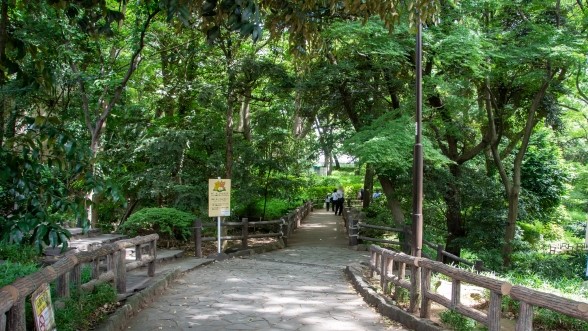
-
-
-
【港区】浜離宮恩賜庭園
浜離宮恩賜公園は、江戸時代から続く大名庭園で、都市と自然、江戸と現代の調和を感じられる庭園です。池や森の先に広がる高層ビル群は、クールで不思議な光景。園内には樹齢三百年の松や鴨場、伝統的な建物があり、伝統と四季の庭園美を楽しみながら散策できます。池に面した茶室では、抹茶や和菓子を味わいながら、庭園の全景を望みましょう。この池は東京湾とつながっているので海水が流入し、ボラやハゼ、セイゴなどの海水魚も生息しています。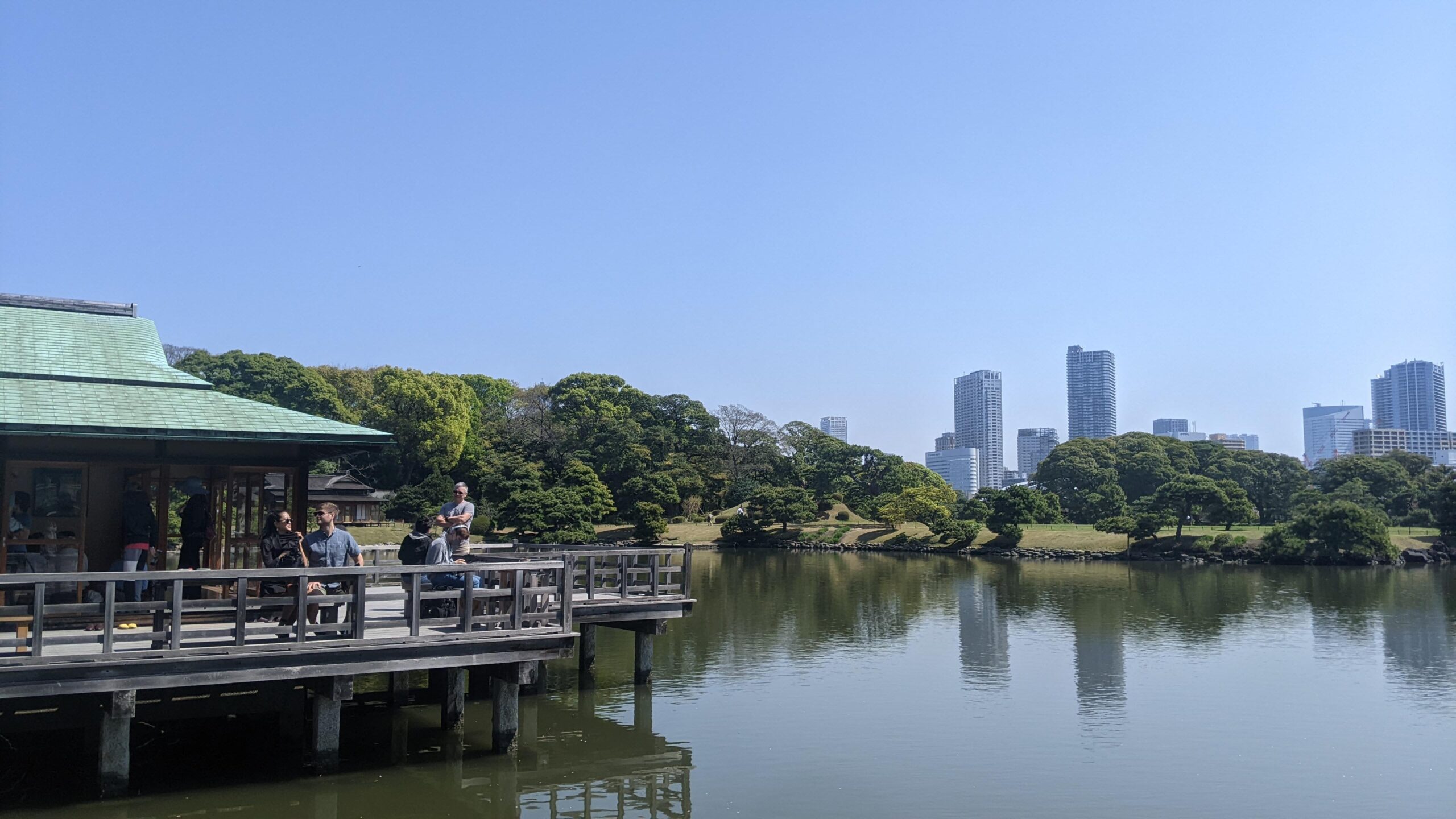
-
-
-
【千代田区】北の丸公園
北の丸公園は樹齢50-70年の木々が多数茂る、都心の森林公園です。皇居東御苑に隣接し、春は桜並木、秋はもみじ林が絶景となります。公園内にはクスノキやカツラの林や、広大な芝生広場、池があり、都心の喧騒を離れて、リラックスした時間を楽しむことができます。この公園は九段下・神保町・竹芝から徒歩15分圏内で、清水門、田安門から九段下駅にアクセスできます。竹橋駅に向かう内堀通り沿いには、近代美術館や国立公文書館があります。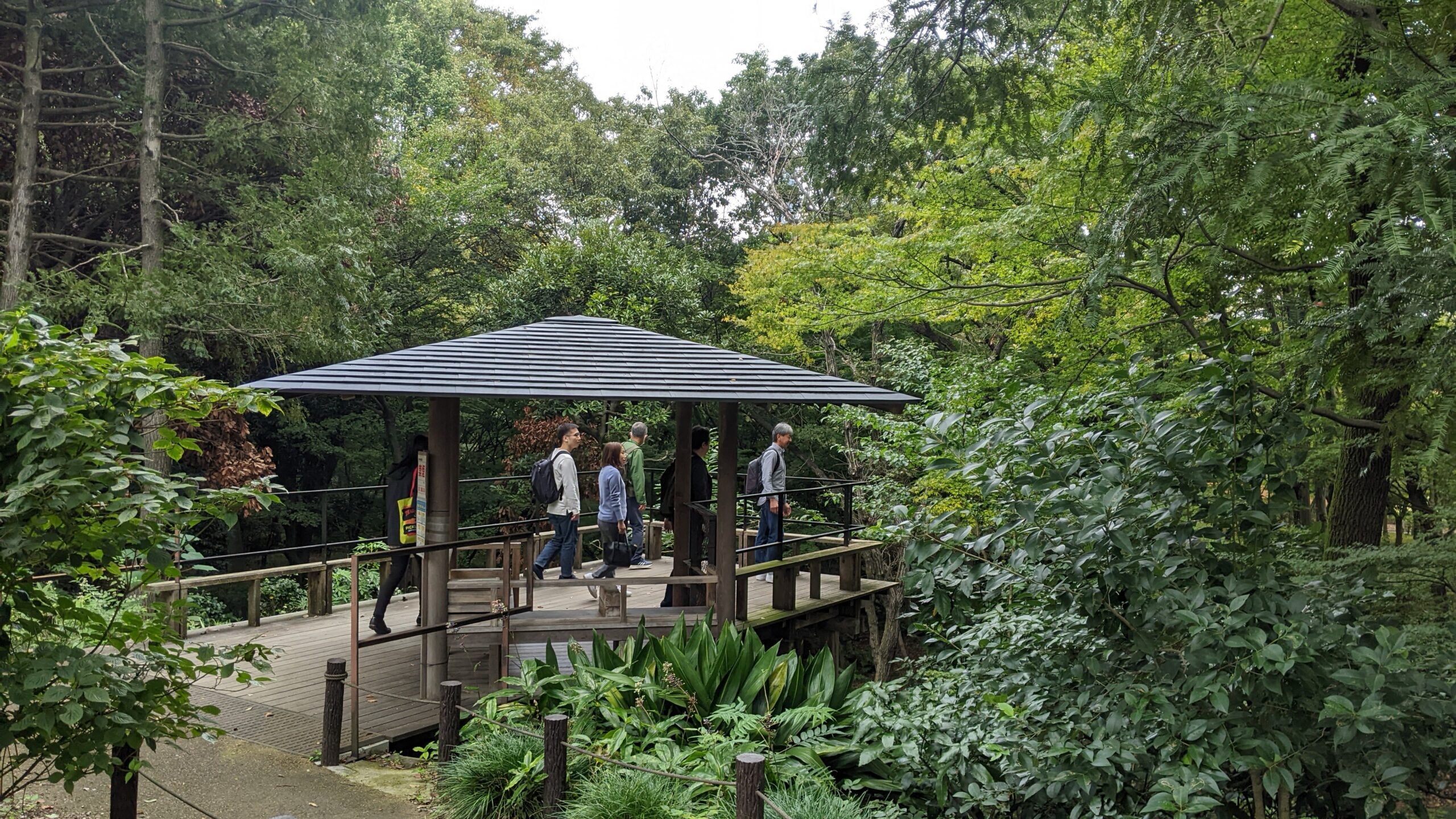
-
- TOURツアー
森林浴セラピーの知識をもつガイドと
東京の公園で森林浴体験してみませんか。- ツアー一覧 ウェルネス森林浴ツアー
